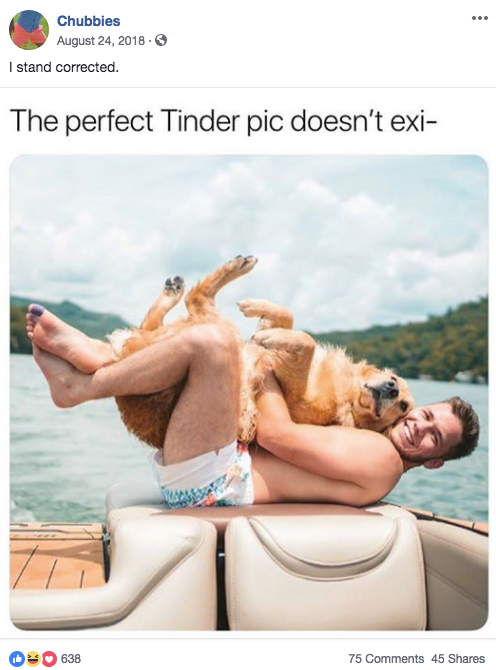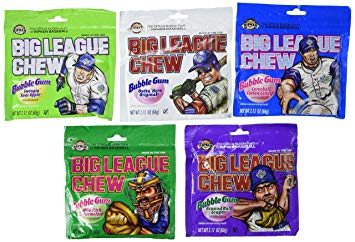What brand managers
can learn from DTC companies
What brand managers can learn from DTC companies
- Chubbies and Away fly out of the gates
- Your brand should sell more than your products
- Tap into the brand building power of user generated content
- DTC brands can leverage in-person experiences to their advantage
- A new blueprint for DTC growth
- Key takeaways
Over the last decade, direct-to-consumer (DTC) companies like Warby Parker, Away, and Chubbies have reinvented how people buy consumer products. For established retail brands, this represents both an existential threat and one of the biggest growth opportunities since the advent of TV advertising. With niche brands popping up every day, "death by a thousand cuts" is a top concern at many consumer product companies (CPC). But the smartest amongst them have cherry-picked the best DTC marketing strategies and leveraged them with their competitive budgets and established distribution channels. In this article, we'll give a short history of the DTC market and break down these companies' strategies so that you can use them in your next rebrand or marketing campaign.
In February 2008, Neil Blumenthal emailed three of his friends and proposed that the four of them start an online eyeglasses company. Two years later on February 15, 2010, they launched their site, Warby Parker, and received a flood of orders after GQ wrote an article dubbing them the "Netflix of eyewear." Over the next three years, the company grew faster than almost any other company in America. By April 2015, investors valued the company at $1.2 billion.
By manufacturing their own glasses and then selling them online, Warby Parker helped invent an entirely new business model now called direct-to-consumer (DTC). Following their success, there's been an explosion of companies selling everything from toothbrushes to toilet paper, looking to replicate the same model.
At first, DTC companies appeared to have the perfect business model: they could save money on retail rent, cut out the middleman, and undercut large corporate competitors in the process. By connecting directly with their customers, DTC companies could also better control their messaging, gather valuable data on consumer purchasing behavior, and rapidly fold their learnings into new product development. But the benefits of the DTC model are now proving to be short-lived.
"I think there's a reckoning coming for these people," says Wharton professor of Technology and Digital Business Kartik Hosanagar. "These venture-funded companies trying to scale are going to find out there's just no way to make the numbers work."
New DTC companies have seen their competitive advantages evaporate almost overnight as new middlemen have emerged in the form of digital advertising giants like Facebook and Google. According to marketing analytics company Adstage, from Q2 to Q4 of 2018, the median cost per click (CPC) for Facebook ads climbed 32%, while the medium click through rate (CTR) fell by over 65%.
As an increasing number of DTC companies have become hooked on paid digital advertising, the rising costs of Facebook and Google have swelled to approach the cost of paying rent on a brick-and-mortar store, putting many out of business or forcing them to significantly raise their prices.
But a few DTC companies, like Away Travel and Chubbies, have figured out a way to avoid costly paid advertising. They've learned that the only defense against competition and rising advertising costs is a company brand.
In this story, we'll break down how these two companies and other DTC success stories have managed to build successful brands.
Chubbies and Away fly out of the gates
Away's founding story is similar to many other DTC stories: on a trip to Switzerland, Jen Rubio — the company's founder — became frustrated when her suitcase broke. She posted a photo asking friends for suggestions and got nothing. She could either buy a junky suitcase at T.J. Maxx or shell out a small fortune for designer luggage. She saw an opportunity to sell "first class luggage at a coach price."
Years later, Rubio met another DTC founder, Tom Montgomery of Chubbies shorts, at a start-up conference one Friday afternoon in late June 2017. Montgomery told the audience a similar tale: he'd initially designed some short length men's shorts for himself and his buddies and found that he was being stopped on the street by young guys wondering where he'd bought his shorts. Soon after, he launched Chubbies, hinging his DTC start-up to the matra "Sky's out, thighs out!" Before long, Chubbies sold 10,000 pairs of shorts in one day.
Rubio and Montgomery both went on to raise venture capital for their companies, joining more than 400 other DTC start-ups that have raised a collective $3 billion in venture capital since 2012. But while so many of these companies have fallen victim to increasing advertising costs, Chubbies and Away have continued to deliver impressive growth metrics — doubly impressive when you consider Chubbies is selling $60 men's short shorts, and Away is selling $250 luggage that comes with a lifetime warranty. Both companies have relied on brand strategies built on three core concepts:
- Brands should sell more than their products.
- Brands can leverage user-generated content to reduce customer acquisition costs.
- DTC brands can still leverage in-person experiences to their advantage.
Your brand should sell more than your products
Both Rubio and Montgomery realized early on that in order to continue to grow aggressively, their brands would need to sell more than just their physical products. Both brands now deliberately sell a lifestyle.
"We don't consider ourselves a fashion company, we are a beer brand that happens to sell shorts," Montgomery says.
Nowhere is this more visible than on Chubbies' YouTube channel, aptly named ChubsterNation where viewers are promoted to "Chubscribe." The videos, like one entitled "How do we add men's synchronized swimming to the summer games? BECAUSE IT'S GLORIOUS," have little to do with Chubbies' products, but are a fun extension of a brand that wants to "feel like hanging out with the boys."
Rubio saw a similar opportunity in the luggage market. "The marketing [of luggage] was really bad," says Rubio. "There was really no storytelling in a place that was ripe for storytelling." Under Rubio's direction as President and Chief Brand Officer, Away has established a brand that evokes the adventure and romance of travel.
"We'd created a brand that was so synonymous with better travel that customers were calling us to get our thoughts on way more than just luggage — they were reaching out to our customer service line asking for tips and recommendations ahead of upcoming trips," Rubio said.
The company's brand team set out to embrace that distinction head on. Last year, the company launched Here, a beautifully designed print and digital travel magazine, and "Airplane Mode," a podcast that "explores the reasons we travel and places we find ourselves."

Both brands look for every opportunity to stoke the broader lifestyles their brands help their customers realize. "Every customer touchpoint is an opportunity to be exceptional," says Chubbies co-founder Preston Rutherford. "Think of every customer touchpoint as an opportunity to provide an entertaining brand-building experience."
Tap into the brand building power of user generated content
The real genius of both Chubbies' and Away's brand-building strategies lies in their reliance on user-generated content (UGC): videos, social media shares, and other content voluntarily generated by their customers.
"Customers who have good experiences with your brand are motivated to inform their peers by sharing their experiences. Referrals are one of the cheapest and fastest ways to expand your customer base," writes Pius Boachie in his article User-Generated Content Brings Authenticity To Brands, published in Adweek. "UGC provides authentic information about the brand's products and services from previous customers, saving resources and boosting brand credibility. UGC is among the hottest — not to mention most scalable—ways for marketers to showcase products, celebrate fans and drive revenue on the web today."
For Away, it was an influencer marketing strategy focused on user-generated content that sparked the company's initial growth.
In late 2015, Rubio and her co-founder, Korey, realized that their first shipment of suitcases would not be ready for the holiday season. Panicked, they pulled an audible by recruiting 40 photographers, artists, and travel writers to contribute articles to a hardcover gift-book titled The Places We Return To. The duo sold out all 2,000 copies of the book that were produced, mostly to successful, influential customers. Included in the book was a gift card for a free Away suitcase — an unexpected surprise — and a barrage of social media activity ensued from pleasantly surprised customers.
"We knew that we only had one opportunity to debut the brand in a meaningful way," Rubio recalls. The company was off and running, and it continues to use a similar influencer marketing strategy today. They never pay for posts but provide influencers with a free suitcase — and the rest takes care of itself.

Brands looking to employ a similar influencer marketing strategy should study the approach of Scentbird founder, Sergei Gusev, whose company sells DTC perfume subscriptions. After stumbling across a woman reviewing products that she loved on YouTube, Gusev noted that she had 150,000 followers. He sent her free perfume and asked her for a review. The subsequent review generated 100 sales in 2 days — a customer acquisition cost of about 14 cents. Scentbird relied on this process almost exclusively to grow the company to about $75,000 in monthly recurring revenue with basically no marketing budget. Here's the process they used:
Scentbird's influencer marketing strategy to create user-generated content
- Search YouTube for similar product reviews — Gusev started out by searching for "perfume reviews" then "[Competitor Name] reviews." The search results returned thousands of influencers who had already posted reviews of similar products.
- Create a spreadsheet of influencers — You can start building your spreadsheet of influencers manually, hire interns or a virtual assistant, or use a site like Upwork.com to hire someone with web scraping expertise to extract website data and add it to your spreadsheet automatically.
- Reach out to influencers — Send the influencers that you've identified an email offering them your product for free in exchange for a product review. In Gusev's experiments, about 30% of influencers replied to his first email, with 20%-30% replying to his second or third email attempts.
- Track your reviews and sales — Make sure to clearly ask your influencers to send you a link to your product review once it's been posted. Tracking sales from YouTube can be difficult, but coupon codes, bit.ly links, and UTM parameters can help you more effectively measure the influencer-generated sales.
- Adopt technology to scale your influencer marketing strategy — Once you've seen success with influencer marketing, it may be time to invest in a platform that can help you find and manage influencer relationships at scale. Scentbird scaled their influencer marketing strategy using AspireIQ.
While Away and Scentbird specifically looked to influencers with large online followings to help them create and spread user-generated content, Chubbies has relied on their everyday customer to create content for them.

"Our customers are our best content producers," says Montgomery. "Users send us photos and content and we try to caption them in a fun way. It's not salesy — we never try to sell product on our social channels." Instead, the objective of Chubbies' strategy is "making the customer the hero."
The strategy was born largely out of necessity, as Chubbies sought ways to scale the business as they saw the cost of Facebook advertising continue to climb.
Montgomery's team responded by creating a giveaway that promised to send a beer koozie to anyone who shared a Facebook post about the brand — if the post earned 50,000+ shares. The post was shared more than 75,000 times, and Montgomery realized that the cost of 75,000 koozies was delivering a far lower customer acquisition cost (CAC) than traditional Facebook advertising.

The brand has since innovated on this customer acquisition model, once sending out 1,000 packs of Big League Chew gum to past customers, who responded by tweeting photos of the gum to Chubbies and their friends.
Delivering unexpected customer experiences like these aligns with the lifestyles these companies' brands support. It's a growth strategy that works both online and in-person, as you'll see next.
DTC brands can leverage in-person experiences to their advantage
While DTC brands have historically focused the vast majority of their marketing spend on online customer acquisition channels, many DTC brands are rediscovering the value of in-person experiences with their customers. DTC brands like Bonobos, Warby Parker, and Away Travel have gone so far as to start opening up retail stores — a strategy that Rubio's co-founder at Away, Korey, was skeptical of at first.
"Our hypothesis turned out to be totally wrong," said Korey. "We had person after person coming in and being like, 'Oh, I've been on your website, but who knows what seven pounds really feels like? Oh, that is light. OK, I'll take the green set.'" Every time Away opened a store in a new market, it found that web sales in that market lifted. "It's almost like we're opening a profitable billboard," Korey says.
No brand has realized this effect more strongly than Warby Parker. After building the company solely on online sales, Warby has now opened 66 retail stores in markets across the globe. In an unexpected twist of events, Warby's retail stores are now generating more revenue for the company than all of their online orders combined.
Chubbies has found an even more cost effective way to tap into the power of in-person experiences. "Brand to us is the emotional association your customer has with your brand and with your products," says Montgomery.
A brand can connect with its customers more effectively on an emotional level if the experience of the brand occurs in-person rather than relying solely on online interactions — and Montgomery's team actively looks for opportunities to exploit this phenomenon.
For example, a Chubbies customer sent them a video of himself asking Miss Texas out on a date. The video ended up making it onto the news, and Miss Texas unexpectedly accepted. The Chubbies team saw a brand-building opportunity and pounced, paying for a limo, a bouquet of flowers, and of course sending the customer a few pairs of Chubbies shorts. Social media went wild.
In another similar instance, the Chubbies team received an email from a customer saying his shorts had been stolen from his gym locker. Chubbies not only replaced the shorts free of charge, but they also sent the customer a week's worth of karate lessons so he could defend his shorts the next time around. Chubbies' fun-loving brand has been built on acts like these, whose costs are trivial when you consider the emotional connections and brand associations they have generated.
A new blueprint for DTC growth
DTC companies will need to continue to find new, more cost-effective customer acquisition strategies in order to continue to grow their brands and deliver on the expectations of their investors. But what Away and Chubbies learned is a timeless lesson of marketing: brand is a company's best defense against competition and shrinking margins.
As these companies have demonstrated, sometimes the best way to thrive is to allow your customers to market your business for you by providing a brand experience that connects with them on an emotional level. Rather than sit back and hope that it works, however, both companies actively sought ways to promote the content and inspire people to share more.
While nobody is certain what will come next in the digital advertising market, it's likely that Away and Chubbies will continue to thrive as they double down on their brand and create something that inspires envy in any brand marketer.
Key takeaways
- DTC brands should strive to sell something greater than their products — often a lifestyle desired by their target customers.
- Brands that can tap into user-generated content achieve significant advantages when it comes to paying for exposure, especially on social media platforms.
- DTC brands should not ignore the power of in-person experiences; often they represent the strongest brand-building opportunities by appealing strongly to customers' emotions.